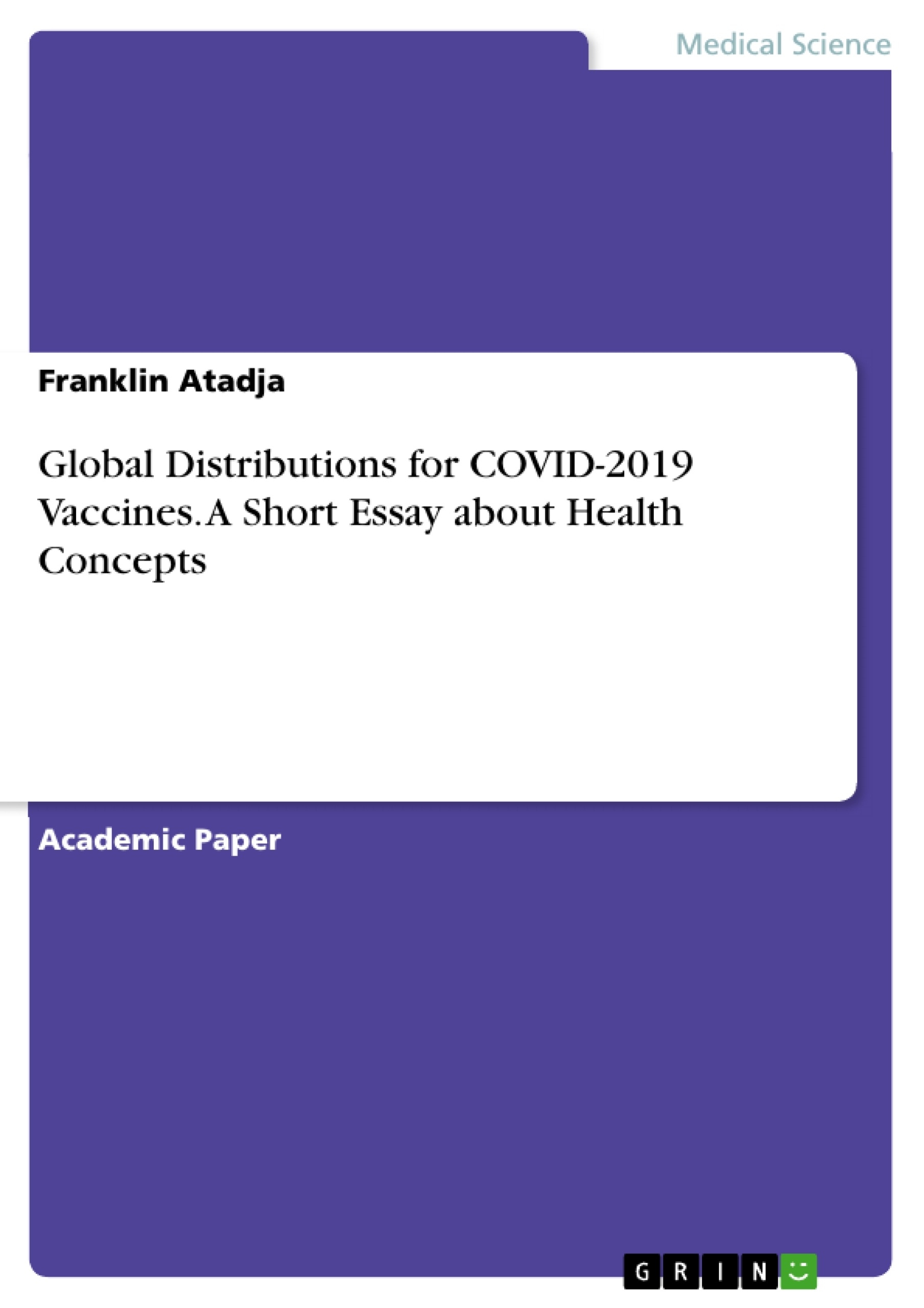Scientists and doctors internationally are trying to develop a more virtuously regulated method of distribution for the COVID-19 Vaccine when it becomes available because there will be a unavailability at the launch of the process. The connoisseurs are suggesting the Impartial Precedence Model, which consists of treating people at risk of untimely death, health care workers, the aging, and those with irretrievable health effects. To use this standard of distribution would not be honestly fair to those individuals. It is honorable for people with diabetes, corpulence, and those who live in abject poverty-stricken neighborhoods be added as a primacy under this Good Priority Model.
There has been news about a similar way of distribution across the globe for COVID-19 Vaccines when made satisfactorily for human intake. The problem with that has been the experts are barring numerous persons that are undergoing difficulties. They are planning a trio-phase plan that they contemplate to be honest and impartial.
Table of Contents
- Introduction
- Main Idea
- Conclusion
Objectives and Key Themes
The objective of this text is to critique the proposed "Impartial Precedence Model" for COVID-19 vaccine distribution, arguing that it unfairly excludes vulnerable populations. The author advocates for a revised model that prioritizes individuals with diabetes, obesity, and those living in poverty-stricken areas.
- Critique of the Impartial Precedence Model for COVID-19 vaccine distribution
- The disproportionate impact of COVID-19 on individuals with diabetes and obesity
- The health disparities faced by poverty-stricken populations during the pandemic
- Ethical considerations in vaccine allocation
- Advocacy for a more equitable vaccine distribution model
Chapter Summaries
Introduction: The introduction sets the stage by highlighting the anticipated scarcity of COVID-19 vaccines upon initial release and the ensuing need for a carefully considered distribution strategy. It introduces the "Impartial Precedence Model," which prioritizes high-risk individuals such as healthcare workers and the elderly, and immediately challenges its inherent biases by arguing for the inclusion of individuals with diabetes, obesity, and those residing in impoverished neighborhoods as a matter of ethical fairness. The author posits that the current model neglects a substantial portion of the population facing heightened vulnerability to the virus.
Main Idea: This section delves into the flaws of the proposed three-phase "Unbiased Priority Model." The author meticulously dissects each phase, highlighting its inconsistencies and ethical shortcomings. Phase one, focusing on early death risk, is deemed flawed due to the impossibility of accurately predicting individual lifespans. Phase two, concerning socioeconomic factors and poverty, is criticized for its arbitrary classifications and unfair targeting of specific populations. Finally, phase three, based on infection rates, is challenged for its reliance on potentially inaccurate and manipulated data. The section concludes by emphasizing the urgency of considering the unique vulnerabilities of specific populations, particularly those with diabetes and obesity, along with the impact on impoverished communities.
Keywords
COVID-19 vaccine distribution, Impartial Precedence Model, ethical considerations, health disparities, diabetes, obesity, poverty, pandemic, equitable allocation, vulnerable populations.
FAQ: Critique of the Impartial Precedence Model for COVID-19 Vaccine Distribution
What is the main topic of this text?
This text critiques the "Impartial Precedence Model" for COVID-19 vaccine distribution, arguing that it unfairly excludes vulnerable populations such as those with diabetes, obesity, and those living in poverty-stricken areas. It advocates for a revised model prioritizing these groups.
What are the key themes explored in this text?
The key themes include the ethical considerations of vaccine allocation, health disparities during the pandemic, the disproportionate impact of COVID-19 on specific vulnerable groups (individuals with diabetes and obesity, and those in poverty), and the advocacy for a more equitable vaccine distribution model.
What are the objectives of this text?
The objective is to demonstrate the flaws of the "Impartial Precedence Model" and propose a more equitable approach to vaccine distribution that addresses the needs of vulnerable populations often overlooked in existing models. It aims to highlight the ethical implications of neglecting these groups in vaccine allocation strategies.
What are the main arguments presented against the "Impartial Precedence Model"?
The text argues that the model is flawed because it fails to adequately consider the heightened vulnerability of individuals with diabetes and obesity and those living in poverty. It criticizes the model's reliance on factors that may not accurately reflect true risk and its potential to exacerbate existing health inequalities.
How does the text structure its critique of the Impartial Precedence Model?
The critique is structured by examining the flaws within each proposed phase of the "Impartial Precedence Model." Each phase is dissected, highlighting its inconsistencies and ethical shortcomings in terms of predicting lifespan, socioeconomic factors and infection rates. This structured approach allows for a point-by-point refutation of the model's logic.
What alternative model does the text propose?
The text doesn't explicitly propose a fully developed alternative model, but it strongly advocates for a revised model that prioritizes individuals with diabetes, obesity, and those living in poverty-stricken areas, emphasizing the need for equitable distribution that accounts for these heightened vulnerabilities.
What are the key words associated with this text?
Key words include: COVID-19 vaccine distribution, Impartial Precedence Model, ethical considerations, health disparities, diabetes, obesity, poverty, pandemic, equitable allocation, vulnerable populations.
What is the overall conclusion of the text?
The text concludes that the "Impartial Precedence Model" is ethically flawed due to its failure to address the unique vulnerabilities of specific populations. It urges a reevaluation of vaccine distribution strategies to ensure a more equitable and just allocation of resources.
What is included in the provided preview?
The preview includes a table of contents, a statement of objectives and key themes, chapter summaries, and a list of keywords. This provides a comprehensive overview of the text's content and arguments.
- Quote paper
- Dr. Franklin Atadja (Author), 2020, Global Distributions for COVID-2019 Vaccines. A Short Essay about Health Concepts, Munich, GRIN Verlag, https://www.grin.com/document/1003090




